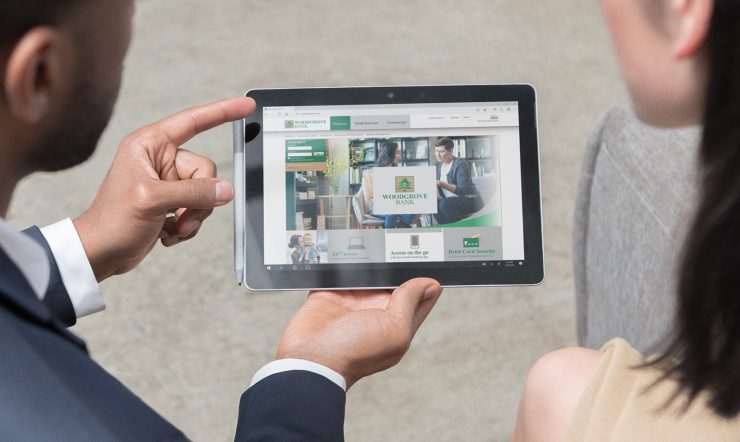Our modern workforce is evolving—the importance of shared physical space is giving way to that of improved virtual interactions and collaborative digital tools. “Hybrid” workforces are becoming the new norm. Teams that combine in-office, at-home, and mobile workers must collaborate successfully in shared digital environments.
In 2020, the share of full-time, remote information workers in the global workforce skyrocketed. Most of these workers1 believe the transition to remote work has gone well. But companies must optimize now-diverse IT environments—characterized by new devices connecting to their corporate networks—to sustain them.
Classic models for team and equipment management no longer apply as these virtual teams become more common. Boston Consulting Group (BCG) and KRC Research found modern workers across Europe prefer to spend almost one third (31%) of their time outside of traditional work settings; but most managers (61%) feel they are not delegating and empowering their virtual teams effectively.
Digital tools that optimize remote collaboration, security, and authentication are essential in this new paradigm. The right technology stack provides teams with the freedom to work their own way from any location, securely and effectively. Meanwhile, managers can interface with them successfully as they continue to lead.
Here, we examine opportunities for business and team leaders to “enable teamwork anywhere”. We identify new best practices and modern technologies for managing and empowering hybrid teams and consider the top new challenges as security teams adapt to remote and hybrid work environments.
Improving Collaboration among Hybrid Teams
Since the start of the pandemic, about half of remote employees around the world are as or more productive on collaborative tasks they would normally perform in person, BCG2 reports. Now, flexible and secure devices that support collaboration can help those remote workers excel not only as remote employees, but as hybrid teams.
Location needn’t be a limiting factor in these hybrid workplaces. Purpose-built, remote-working solutions designed to bring team members together securely can facilitate those interactions with the right features and support. For example:
- Apps with collaboration features such as co-authoring, note taking, and verbal feedback
- Advanced, LTE-enabled devices for fast and secure connections from anywhere
- Clear, uninterrupted video calls via any connection and audio setup
- Virtual opportunities to build closer connections with colleagues, partners, and clients
In this new environment, members meet, move, and collaborate without boundaries. With sophisticated, LTE-enabled devices like the new Surface Pro 7+ for Business, every worker can connect at their convenience, independently of where they are and even if they don’t have secure or reliable Wi-Fi access. This also includes employees who work in the field – the Surface Go 2 for Business is a perfect example of a compact, easy-to-carry, lightweight device for firstline workers that allows employees to work from anywhere through LTE.
These technologies create a foundation for future company culture, productivity, and shared success in this new paradigm.
Preparing for New Security Challenges
Supporting collaboration in today’s “anywhere office” presents new challenges for securing data and systems. An upswing in phishing attempts1 has coincided with new behaviors during the pandemic, for example. But introducing new, unregulated tools to digital workspaces presents new risks as well.
On the other hand, transitioning teams to a new network of purpose-built devices allows IT and security teams to be proactive about device and data management. In the cloud, security teams can provision and deploy devices remotely without sacrificing security—and with greater flexibility, connectivity, and collaborative support than what employees enjoyed in the office alone. For example:
- Device-based measures that deter tampering and malicious software
- Automated encryption and threat detection to reduce the strain on security teams
- Cloud-based device and data management across all team members
- Built-in, proactive protection throughout hybrid networks (“from chip to cloud”)
Hybrid security means confidence in device and data integrity—no matter how teams use them, or how often they change hands. It means visualizing all managed, co-managed, and even partner-managed devices now and in the future.
Managing Employees—on the Move, and at Home
A new generation of networked, WiFi- and LTE-enabled devices helps keep workers engaged and connected. Even among those for whom mobility is critical, managers and their teams can maintain productivity and performance by formally incorporating modern mobile devices into hybrid workspaces.
In one example2, a sustainable energy company deployed collaboration platforms, data visualization, and low-code workflow optimization solutions to improve communications among its worldwide teams. The company’s fully integrated, remote-working network of devices now promotes access on LTE-enabled devices, including mobile phones. The company reports improved communication and productivity as a result.
Microsoft’s Surface Pro 7+ for Business is one such purpose-built device for mobile productivity that offers greater autonomy, thanks to the perfect balance of battery life and performance driven by the latest Intel processors. Employees also benefit from its high-definition (HD) cameras, high-quality mics and speakers, and interactive digital whiteboards that make remote connectivity a truly professional and value-added experience.
Secure Your Hybrid Future Today
Small teams are the foundation of today’s organizational success: “whether your employees are working remotely, on premises, or in some combination of both.” as McKinsey3 describes. “Your opportunity is to fashion the hybrid virtual model… and let it give birth to a new shared culture for all your employees that provides stability, social cohesion, identity, and belonging.”
Purpose-built devices for managing, empowering, and securing hybrid teams reinforce these benefits, even when team members are physically apart. Microsoft’s suite of devices is designed to make the most of the software you rely on every day—empowering people to be more agile, connected, productive, and secure, no matter where they work.
Know more about how to empower your remote employees to boost productivity and stay engaged with colleagues.












